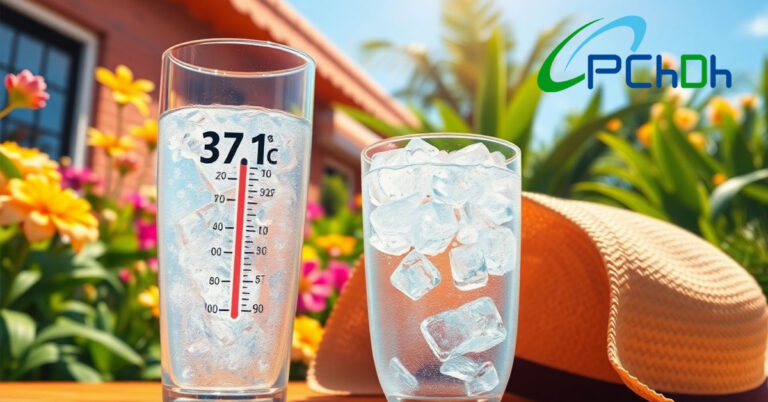Knowing how to convert temperatures between Celsius and Fahrenheit is important in many parts of life. Whether you’re cooking, checking your health, or working in science, understanding these scales matters. For example, 37.1°C is very close to normal human body temperature. This makes the conversion especially useful in medical and health contexts. In this article, you will learn how to convert 37.1°C to Fahrenheit easily. We will explore methods, practical uses, and tips to get accurate results. Lwt;s know how to convert 37.1 C to F (Fahrenheit).
Understanding Celsius and Fahrenheit Scales
What Is the Celsius Scale?
The Celsius scale is a measurement system for temperature. It was created in the 18th century and is used in most countries. The scale is divided into 100 degrees, with 0°C marking the freezing point of water. The boiling point of water is 100°C under standard pressure. Because of this simplicity, Celsius is popular in everyday life, especially in countries that use the metric system.
What Is the Fahrenheit Scale?
The Fahrenheit scale was created earlier by Daniel Gabriel Fahrenheit. Unlike Celsius, it divides the temperature range into smaller parts for some applications. On this scale, water freezes at 32°F and boils at 212°F. Fahrenheit is mainly used in the US and some Caribbean countries. It is common for weather reports, cooking, and medical use there.
Key Differences Between Celsius and Fahrenheit
The main difference is where they start and how they divide temperatures. Celsius begins at 0°C for freezing water and goes up to 100°C for boiling. Fahrenheit starts at 32°F for freezing water and reaches 212°F at boiling. The scales have different zero points and step sizes, making conversions necessary for comparing temperatures across regions or contexts.
How to Convert 37.1°C to Fahrenheit
The Basic Conversion Formula
To convert Celsius to Fahrenheit, use the simple formula:
[ F = (C \times \frac{9}{5}) + 32 ]
Here, C stands for the Celsius temperature, and F is the result in Fahrenheit. This formula is straightforward and works every time.
Step-by-Step Conversion of 37.1°C
- Multiply 37.1°C by 9/5: ( 37.1 \times \frac{9}{5} = 66.78 )
- Then add 32 to get Fahrenheit: ( 66.78 + 32 = 98.78 )
So, 37.1°C equals approximately 98.78°F. This number is very close to the normal human body temperature, which is about 98.6°F.
Alternative Conversion Methods
You can also use online calculators or smartphone apps for quick conversions. Conversion tables are handy if you need to compare multiple temperatures. However, digital tools are often the most precise, especially when dealing with medical readings or scientific data.

Practical Applications of 37.1°C in Real Life
Medical and Health Contexts
Since 37.1°C is near normal body temperature, small changes can signal health issues. A temperature slightly above 37°C might be a sign of a fever. Doctors often consider 100.4°F (38°C) as a fever threshold. Being familiar with this conversion helps you interpret health data accurately.
Scientific and Laboratory Uses
Researchers frequently need to control experiments at specific temperatures. Knowing how to convert Celsius to Fahrenheit ensures proper calibration. For instance, certain chemical reactions depend on precise temperatures, making conversions vital in labs.
Cooking and Food Safety
Cooking often requires specific temperatures for safety and quality. Some recipes and food safety standards specify temperatures in Fahrenheit. Accurate conversions help in setting ovens or checking food temperatures, reducing risks like undercooking or overcooking.
Tips for Accurate Temperature Conversion
Use Reliable Tools
Whenever precision is important, use reputable online calculators or digital thermometers. They help prevent mistakes, especially for medical or scientific applications. Manual calculations are reliable but double-checking with tools is a good habit.
Remembering the Conversion Formula
To recall (F = (C \times \frac{9}{5}) + 32), think of it as “multiply then add.” Practice this a few times, or make a quick note near your work area. This will make conversions quicker, especially in emergencies.
Avoiding Common Mistakes
Never mix up Celsius and Fahrenheit readings. Use the correct units when recording or sharing temperatures. Also, check your calculations step-by-step to avoid simple errors that could lead to wrong conclusions.
Conclusion
Converting 37.1°C to Fahrenheit is simple when you know the right formula. It helps in many practical areas—health, science, and cooking. Great results come from using reliable tools and paying attention to details. With a clear understanding, you can handle temperature conversions confidently. Remember, knowing these scales allows you to make smarter decisions, especially when health or safety depends on it. Keep practicing, and you’ll always be ready to convert temperatures accurately.


